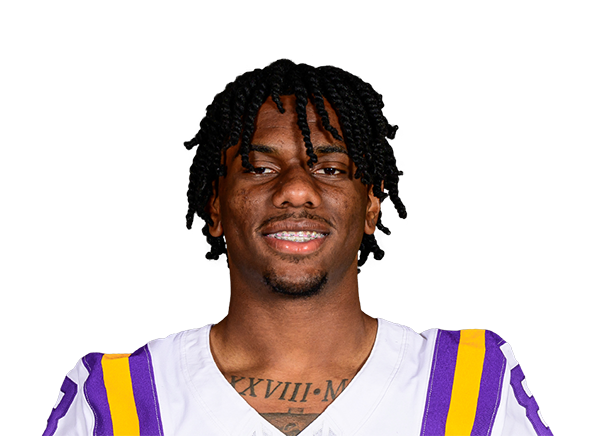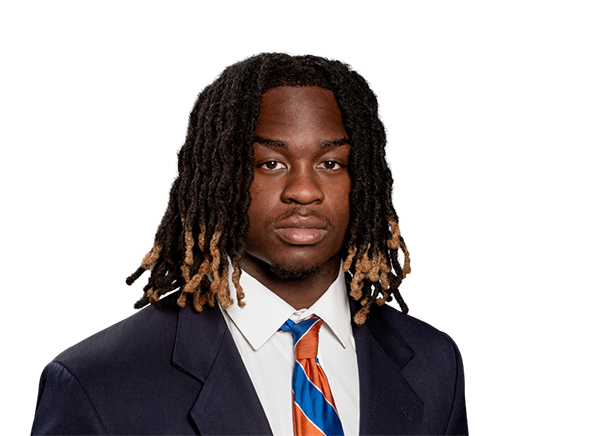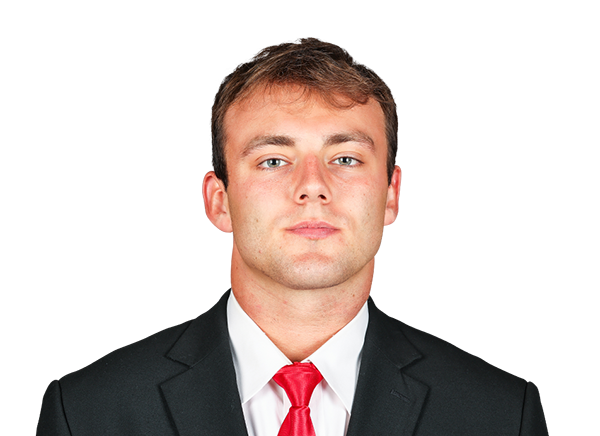This is a series that builds off each volume, so if you haven’t read The Intelligent Fantasy Football Investor Volume 1 or Volume 2 yet, please stop now and go read them on Dynasty Nerds. This series aims to bring investment concepts and a different thought process to the fantasy football community. The point is, let’s think differently and try to win some dynasty leagues.
To summarize the first two volumes, we are talking about a new way to look at value in fantasy football. The premise is that fantasy players should be valued based on the relationship between a player’s price and his earnings. This leads us to this equation: P/E = KTC / PPG (note: divided by 10 for simplicity). Then we talked about how to apply P/Es as a valuation framework using clusters and mean reversion. And finally, we developed a new way to give player recommendations, including a target price with upside/downside.
Now let’s look into more investing concepts and apply some of these valuation concepts to RBs. Note: current KTC prices are from 2/25/22.
Good player vs. good investment
Much of the ‘normal’ fantasy football analysts’ time is spent figuring out whether a player is good or bad. Whatever ‘bad’ means, we are talking about pro athletes here, so everyone is good. Analysts spend hours pouring over film and analytics and try their best to conclude one way or the other. I have my opinions about the best ways to come to those conclusions, but that’s not what this series is about. It’s about a superior understanding of the market and then using that to create value.
Here is one mistake I see many fantasy analysts make all too often, the difference between a good player vs. a good investment. An objectively good player doesn’t necessarily mean he is a good investment. If said good player is acquired for less than his fundamental value, then yes, he is probably a good investment. That’s just it. Good players can be good or bad investments depending on that player’s price vs. his fundamental value. The same goes for bad or mediocre players. They can be good or bad investments as well.
One of the best ways to create value in dynasty fantasy football is to correctly identify valuable players as they come into the league, i.e., rookies. In May of 2021, using SF rookie ADP, you had to use pick 1.06 to acquire Najee Harris. In terms of KTC/price, the pick 1.06 is ~5000. Harris is now at a KTC/price of ~6500. That means his KTC/price has appreciated ~30%. Whatever your views are on whether Najee Harris is a good or bad player, in May of 2021, he was a good value. But that doesn’t necessarily mean he is a good investment right now.
Clusters
Each player is put into a ‘cluster’ of players with similar production levels, age, and upside potential. Clusters separate players into like-for-like categories, making it ideal for P/E ratio analysis. Please read more about clusters on Twitter from @DFBeanCounter of Bulletproof Fantasy Football.
Here is a chart that shows the average P/E for each RB cluster.

Scenario analysis
Scenario analysis is a common tool used in the investment world. Many times portfolio managers will look at their portfolios and create different scenarios to see what the possible outcomes could be. Typically, managers will create base-case, best-case, and/or worst-case scenarios. Let’s use scenario analysis and clusters to analyze the valuation of a couple of RBs: AJ Dillon & Tony Pollard.
To start, both AJ Dillon and Tony Pollard are members of the cluster called Committee Backs. This cluster averaged 11 PPG in 2021. Their current average price/KTC is 2886. And their current average P/E is 27x. The Committee Back cluster comprises RBs like AJ Dillon, Tony Pollard, Michael Carter, Damien Harris, Rhamondre Stevenson, Devin Singletary, etc.
And then, as part of the scenario analysis, we will also be talking about the Core Veteran cluster (15-20 ppg, over 24 years old). This cluster averaged 16 PPG in 2021. Their current average price/KTC is 4508. And their current average P/E is 28x. The Core Veteran cluster is made up of RBs like Joe Mixon, Dalvin Cook, Nick Chubb, Aaron Jones, Ezekiel Elliot, etc. Both AJ Dillon and Tony Pollard will be 24 years old before the start of the 2022 season.
Scenario analysis – AJ Dillon
Current backup/committee running back AJ Dillon of the Green Bay Packers is currently categorized in the Committee Back cluster. That makes sense from a PPG perspective, as he and the cluster averaged 11 PPG in 2021. AJ Dillon is currently trading at a decent premium to the group and looks to be ~30% overvalued.
However, most would tell you that AJ Dillon is trading at a premium because he has decent odds of taking over the starting RB position this year. One way to develop a fundamental value for AJ Dillon would be to probability weigh his outcomes. What probability would you assign to AJ Dillon becoming the starter? Or him moving his way from the Committee Backs cluster to the Core Veteran cluster? Is it 50/50? Is it more or less than 50%?
What does it look like if AJ Dillon was to move from the Committee Backs cluster to the Core Veteran cluster? Essentially that would mean Aaron Jones is not on the team anymore or is injured. Also, the Packers don’t bring in significant enough talent at RB to make AJ Dillon share the workload with a new back. Essentially, the backfield belongs to Dillon.
We know what the average Committee Back cluster KTC is. And we know what the average Core Veteran cluster KTC is. Now you can take the probability of AJ Dillon getting the average price of the Core Veteran cluster and add that to the probability of AJ Dillon getting the average price of the Committee Back cluster to come up with a fundamental value for Dillon. Then compare that to his current price to see if there is any upside or downside.
What is the market pricing in?

Another way to think about this is to ask, what probability is the market currently pricing in for AJ Dillon becoming a starter? The chart above shows that currently, the market thinks there is an 80%+ probability that AJ Dillon will be the starter next year. That’s a pretty useful number. Now you can decide if you think that probability is too high or too low.
Best-case & Worst-case
Now let’s say you got the inside track, and you know for sure that AJ Dillon will take over the starting RB role for the Packers. You would assign a 100% probability to that happening. If that’s the case, you plug that probability in and find that AJ Dillon has ~7% upside. Now let’s say that you think the 80% probability of him taking over the starting spot is too high, and you think it should be more like 50/50. So you assign a 50% probability of him taking over the starter position. If that’s the case, then AJ Dillon has ~12% downside from current levels.
Ultimately, it’s binary. He either takes over the starters spot and catapults himself into the Core Veteran cluster, where he averages 16 PPG and trades around 4508 KTC. Or, Aaron Jones remains the starter, and AJ Dillon remains in the Committee Back cluster, where he averages 11 PPG and trades around 2886 KTC, in which case he is probably overvalued. So eventually, you are either putting in a 100% or a 0%. If you put in a 0% probability, that means you are saying he stays in the Committee Back cluster and should be valued like one, in which case, he looks ~30% overvalued. 7% upside (in the 100% probability scenario) vs. 30% downside (in the 0% probability scenario) doesn’t make for a very good risk/reward backdrop.
That being said, if he stays in the Committee back cluster, you will probably have to go through the same process next year. What probability would you give him to move clusters next year? So Dillon will probably never get to the full downside of 30% because he will, in the medium term, always have some chance of moving to the Core Veteran cluster.
Scenario analysis – Tony Pollard

Now let’s do the same thing with Tony Pollard. What probability is the market currently pricing in for Pollard becoming a starter and being a part of the Core Veteran cluster? The chart above shows that currently, the market thinks there is a 30% probability that Pollard will be the starter next year.
Ultimately, as we discussed before, it’s binary, he either is or isn’t going to be the starter, so eventually, you are either putting in a 100% or a 0%. If you put in a 0% probability, that means you are saying he stays in the Committee Back cluster and should be valued like one, in which case, he looks ~14% overvalued. And if you give him a 100% chance of becoming the starter and moving up to the Core Veteran cluster, he has ~35% upside from current levels. 35% upside vs. 14% downside. This makes for a better risk/reward backdrop than there is for AJ Dillon. I think this makes for a pretty interesting way to frame a discussion on the value of some of these RBs.
Sensitivity Analysis – Javonte Williams
Unlike a scenario analysis, where many variables are changing depending on different scenarios, a sensitivity analysis is a unique way to look at what happens when you change just one variable. Running back Javonte Williams of the Denver Broncos is one of the hottest RBs on the market right now. Using the P/E valuation process with clusters shows he is ~16% overvalued.

However, what happens to his upside/downside if you increase his PPG. That is something that many experts would venture to say happens in 2022. The chart below looks very similar to the chart above, except with one adjustment, I changed his PPG from 12 to 18 (highlighted). As you can see, that one change flows through the equations and changes the cluster’s average P/E and then changes Williams’ upside/downside from ~16% downside to ~1% upside.

Taking this one step further, the next chart shows a sensitivity analysis that records the different outcomes given changes in his PPG from 12 to 20. As you can see, right around 18 PPG is where Javonte Williams goes from overvalued to fairly valued, and then >18 PPG, he starts to become undervalued. What do you think Javonte’s PPG will be in 2022? Whatever you come up with, you can then use this sensitivity analysis to find out how much upside/downside there is given your own estimated PPG.

Buys & Sells
Now going through all the clusters and comparing each player’s current P/E with his cluster’s average P/E, you can come up with a target price & target PE for each player. Then you can calculate the upside or downside from the player’s current price. After doing that analysis, here are my RB top buys and sells.




Part of the reason I have AJ Dillon and Javonte Williams on the Top Sells list has to do with the in-depth scenario & sensitivity analysis above. I like AJ Dillon. I think he is a really good player. The problem is, I’m not so sure he is a great investment at the moment. I see the probability of him taking over the Packers backfield at lower than 80%, which means he most likely has downside from here.
I also really like Javonte Williams. He was my rookie RB1 last year. I think he is a really good player. Again, the issue is that he may not be a great investment at the moment. Using the sensitivity analysis above, for Williams to have upside, he would have to score >18 PPG next year. I’m not so sure, given the situation in Denver, that he can get there. My guess is he falls into the 15-17 PPG range. This means there is most likely a downside from here.
Reminders
Again, when I say someone is a sell, I say they are a sell at the current KTC prices. I’m not saying you sell for peanuts just to offload him. If you can’t get the premium price on a sell, then hold. And, remember, these recommendations have nothing to do with the players themselves and have nothing to do with real football. All we are doing is applying valuation techniques to fantasy football.
Around mid-summer, we will roll the P/E ratio forward and move from actual 2021 PPG to projected 2022 PPG.
Example trades
Javonte Williams [Sell] = Derrick Henry [Buy] + late 2022 1st
Dalvin Cook [Sell] = Austin Ekeler [Buy]
AJ Dillon [Sell] = Leonard Fournette [Buy] + mid 2022 2nd
Conclusion
Just because a player is good doesn’t in and of itself mean that player is a good investment. A good investment is paying less than a player’s true fundamental value. We used these concepts of valuation P/E, clusters, comparable analysis, scenario analysis, and sensitivity analysis as tools to help figure out a player’s fundamental value. This process will then allow you to make better decisions over time.
Next in this series, we will look at buys and sells in the QB group. I’m looking forward to slicing up the position and giving you guys some real actionable advice to help you win your dynasty fantasy football leagues.
That’s it for now. Please follow along on Twitter @_JasonStein and let me know what questions you have and how I can help. Use promo code “INVESTOR” for 15% off any Dynasty Nerds membership.


















